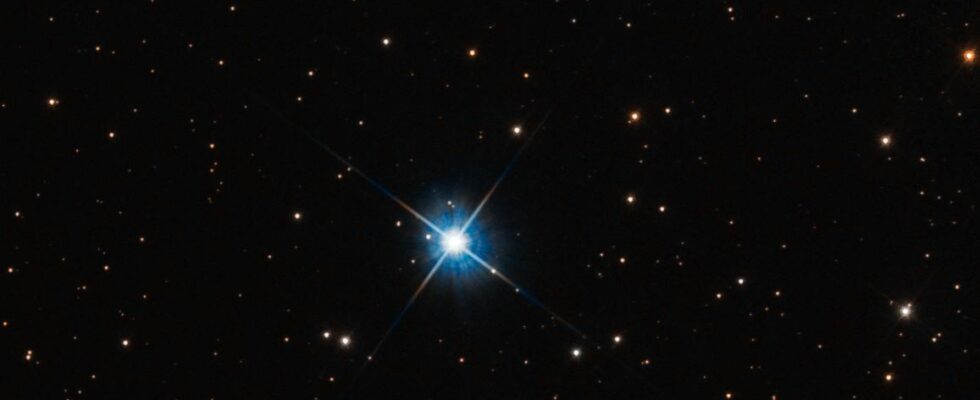For several months, the researchers used the space telescope to observe LAWD 37 passing in front of another very distant star and barely deflecting its light thanks to its mass. A godsend thanks to data from several missions, in particular the catalog of ESA’s star mapper Gaia.
The James Webb has already planned to get started.
It’s all a matter of perspective
LAWD 37 is one of the closest white dwarfs to our own solar system. Located 15 light years away, it is already studied in detail by astronomers around the world. Its light spectrum, its age, the way this star is thought to have collapsed at the end of its life to form the white dwarf it is today… Everything is scrupulously inspected. But for its mass, things are much more complex. Indeed, LAWD 37 is all alone. No exoplanet or binary star can help researchers calculate an orbital period, and therefore extract an estimate. But thanks to an unprecedented meeting, they were able to find this information.
It turns out that, from our point of view, LAWD 37 passed “in front” of another star, much, much more distant. However, as Einstein had theorized, a massive object even deflects light. This is the gravitational lensing effect. This same effect, already observed with massive galaxies or star clusters, has here been very finely measured by Hubble. Thanks to the light deviated from the star “in the background”, the scientists therefore estimated that the white dwarf weighs around 56% of the mass of our Sun.
Hubble still has plenty to do
This particular observation could not have taken place without Hubble, because it required extreme sensitivity to see the deflection of light, all over a long period of observation. Indeed it is not a one-night transit, but a passage spread over several months with an occultation in November 2019.
To prepare for taking measurements, another mission was needed, that of ESA’s Gaia telescope. It is in fact thanks to its cartographic catalog of the position, distance and movements of hundreds of millions of stars in our close vicinity that this rapprochement was anticipated. Gaia has made available to research centers around the world the information collected since 2014, and this “3D map” of our area of the Universe continues to hold treasure troves of information, especially for occultations.
The James Webb Telescope should in turn take advantage of this in the months and years to come for its own observations. Indeed, the team behind the publication on LAWD 37 will repeat the experience with LAWD 66, this time through the infrared sensors of the new space jewel. It will however be necessary to be patient for the publication of the results, this new occultation will not reach its peak until 2024. A method which is spreading more and more!
Source : Hubble

4